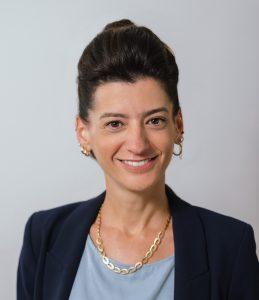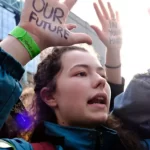Naama Gorodischer says she’s seen how schools and education structures are disrupted first in times of crisis.
“And yet, they benefit the community on many levels, even beyond pedagogy, as one of the only ways to generate routine and progression and provide a core pillar to organise the community around,” the Global Chief Humanitarian and Resilience Officer at IsraAID told EducationDaily.
“Beyond giving children a place to study, schools offer healthy routines and a safe emotional environment. In already vulnerable communities, schools often provide free meal programs, and allow the family unit to remain productive, giving parents the time to work and provide for their families.”
All of these aspects, though, are compromised in times of conflict – something Ms Gorodischer says is especially problematic for communities experiencing repeated emergencies.
“With the added challenges for children raised in the COVID generation, the aspiration of continuous education can begin to feel out of reach,” she says.
Educational continuity plays a key role
Ms Gorodischer believes the role of educational continuity during a crisis is critical – and something she says IsraAID is working to address in the region following the 7 October Hamas terrorist attack that left about 1200 people dead. Since then, Israel’s strikes on Gaza have killed at least 26,637 people and injured 65,387 others, according to the Hamas-run Ministry of Health. An estimated 70 per cent are women and children.
IsraAID is an agnostic non-profit organisation that has responded to emergencies in more than 60 countries since it was founded in 2001. It has grown into an independent NGO to become one of the largest humanitarian aid organisations in the world.
As a native Israeli with Chilean citizenship, Ms Gorodischer obtained her undergraduate degree in Sociology, Anthropology and Education, her Masters in Community Development Studies, and graduated in honours from the Hebrew University of Jerusalem. She has spent almost 20 years working in humanitarian aid and community development in more than 20 countries across the world.
Since joining IsraAID as a program director in 2015, her hands-on involvement has seen her recognised as an international expert in emergency response management, forced migration and at-risk youth, driven by a particular focus on education in humanitarian aid and intervention.

“We usually arrive in a country in the first 48 hours after an emergency – from earthquakes, to hurricanes, to mass displacement events and conflicts – and stay for the long-term, working hand-in-hand with local communities and organisations to build resilience,” she told EducationDaily.
“We often work with the most vulnerable communities – working to not only rebuild but build back better. We always find local partners, and let the community tell us what they need, which means that our responses vary greatly in each context and adapt as communities’ needs shift.”
Disaster relief must evolve and adapt in response to community needs
Ms Gorodischer uses IsraAID’s 2013 arrival in Kenya in the wake of a large-scale refugee crisis to illustrate the evolving needs of disaster relief work.
While the programs initially focused on child protection, as well as prevention of gender-based violence in and around the Kakuma refugee camp in north-west Kenya, initiating a borehole digging project to provide safe water to thousands of Kenyans living in remote villages in Turkana country while facing the region’s worst drought in 40 years, made a critical difference.
The current war in Gaza is, she says, the organisation’s “first large-scale response in Israel”.
“After 22 years of bringing Israeli expertise and technologies to disaster-affected communities around the world, we found that everything we had learned about managing a large-scale crisis was now needed at home,” Ms Gorodischer told EducationDaily.
“We immediately began working with evacuated communities from the Gaza border region, who had been relocated to hotels in the Dead Sea, Eilat and across the country. We began by providing parent and child-friendly spaces, staffed by certified therapists and social workers, that could provide psychological support for families affected by trauma through play.”
These spaces, Ms Gorodischer says, also offer a sense of normalcy and routine in a time full of chaos and uncertainty. As families settled into new temporary homes, she told EducationDaily, IsraAID partnered with other organisations and the Ministry of Education to set up temporary educational spaces to help prevent children falling behind. The aid organisation was also involved in offering psychological support to teachers, students, and their families.
The effects of long-term trauma
Crises and emergencies have long-term implications, including detrimental impacts on the educational staff who often cannot continue their work, with long-term trauma continuing to impact students’ ability to study, even when the conditions change, she says.
“Displacement is also a major factor in times of conflict, which provides another key barrier to continuous education. Limited availability of schooling paired with social, linguistic, and academic integration into new schooling systems can pose an enormous challenge to children – and that is assuming that schooling is available at all,” Ms Gorodischer told EducationDaily.
“Obtaining appropriate documentation and aligning curricula and educational programs from different institutions or countries, in many cases, remains an unsolved issue in such events. We’ve come up against all these issues many times, from our work with communities displaced by conflict in Mozambique, to our work with Venezualan migrants and Colombian host communities in Colombia.”
Completing education helps deliver lifelong benefits
“Completion of schooling and engagement in a positive education system is a key predictor for an individual’s ability to become a productive agent of change in their community,” says Ms Gorodischer.
“It takes completion of nine years of quality education to break cycles of intergenerational poverty. For a generation that lost over two years to the COVID pandemic, followed by conflict and displacement, it reduces the chances of reaching this goal – even with highly rated and accelerated education programs.”
Ms Gorodischer told EducationDaily that schooling is at the heart of concerns for displaced families.
“After 7 October, the entire educational system in Israel was closed for nearly a month. When they resumed, it was mostly on a part-time basis. Over 60,000 displaced children did not have a school facility to return to. These children are expected to shift between educational solutions up to four times this school year – often between one temporary education solution and another.”
Finding solutions requires staged approach
The condition of communities and educational solutions for evacuated children vary from community to community, Ms Gorodischer told EducationDaily.
“As many were uprooted to locations with no capacity to absorb students into existing schooling structures, community-based solutions were developed.”
The first stage, she says, focused on psychosocial elements.
“For example, one nine-year-old student who saw her father killed in front of her, asked the teacher to avoid academic exercises because she came to school to heal, not to study. But other children in that same class had the exact opposite response – they needed the stimulation and distraction of cognitive tasks.”
In the second phase, Ms Gorodischer says temporary learning spaces were developed at the community level, implementing pedagogical activities at the evacuation centres, before transitioning to temporary learning spaces. It was a situation that posed unique barriers – including studying in tent facilities with only partial access to students’ original teachers, as well as frequently changing staff and student bodies.
“In most cases, temporary residences allowed the integration of children into existing schools, in some cases in separate classrooms, and in others as a full integration,” she told EducationDaily.
“This decision was made based on the size of classes, but also the expected interaction between the host community and the displaced community. Exposing students to the traumatic stories of their new classmates, the learning gap already obtained from the school year, and the emotional state of students were all factors in that decision.”
Wherever possible, she says, outdoor solutions were preferred but, in some cases, with schooling solutions not formally recognised by the Ministry of
Education, Ms Gorodischer says it’s unclear how the academic progress of such solutions will be evaluated.
Understanding unique cultural needs is at the core of effective humanitarian aid
IsraAID, she says, has been working to bridge gaps, speeding up the implementation of educational solutions, giving the official authorities the time they need to undergo the required processes and set up stable emergency solutions.
“Emergencies almost always include an interruption to education,” Ms Gorodischer told EducationDaily.
“In some cases, it’s a lack of physical spaces like school buildings – whether infrastructure was damaged in a disaster or families were forced to flee their homes and do not currently have access to education. In cases of migration, ensuring continued access to education requires staff that speaks the same
language as the community or is sensitive to different cultural aspects.”
Teenagers suffer unique impact
Older youth, she says, are at the highest risk.
“In Israel, these academic years are focused on preparing for final exams and graduation. At the same time, this age group had the highest exposure to
the traumatic events,” Ms Gorodischer told EducationDaily.
“High-schoolers study in regional schools, meaning that many of their classmates, both from their own communities and other communities in the region, may have been killed or taken hostage. In some cases, 17–18-year-old students have refused to return to school until their friends are returned from captivity. It is still unclear how the rest of the year will shape up.”








